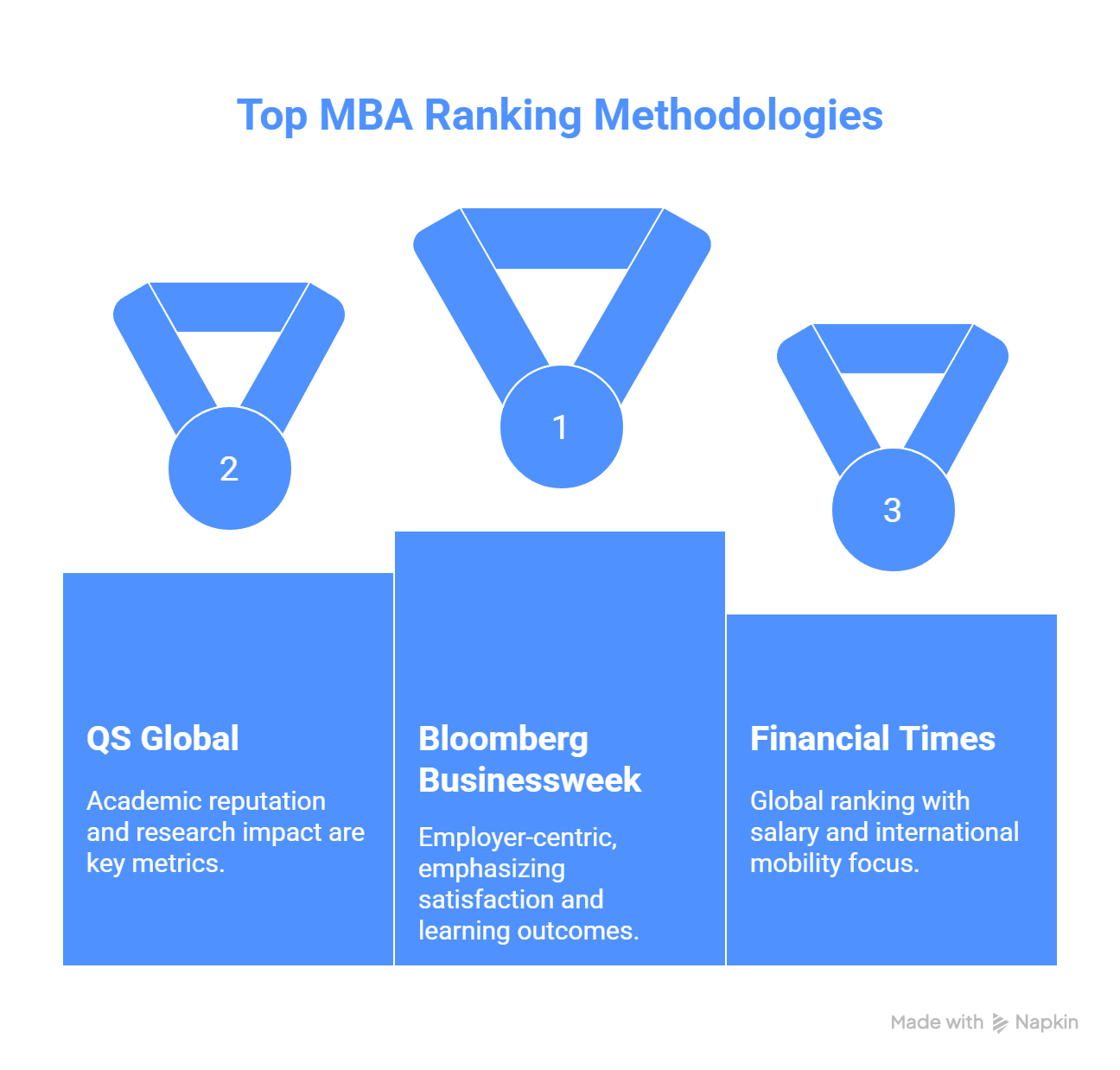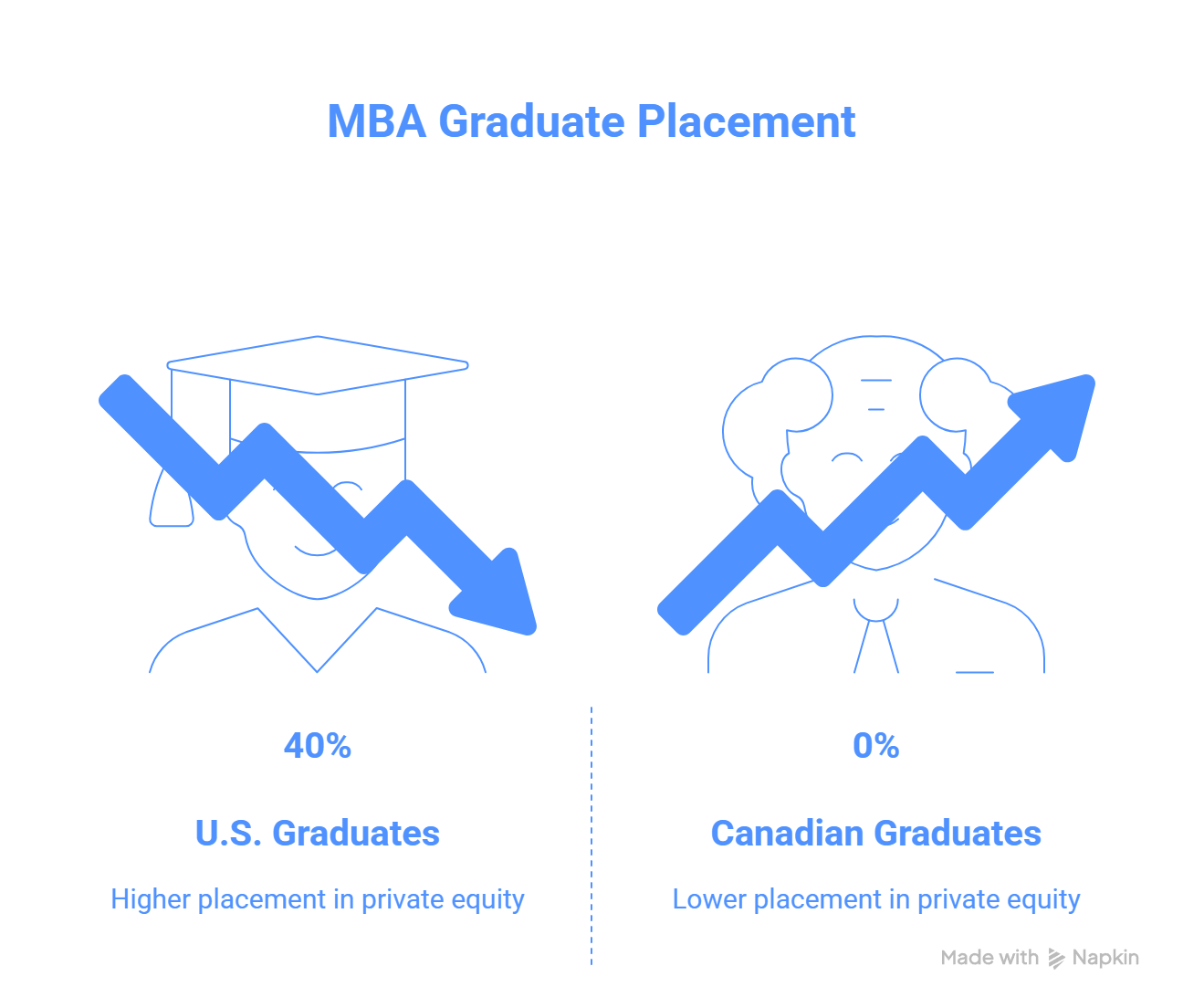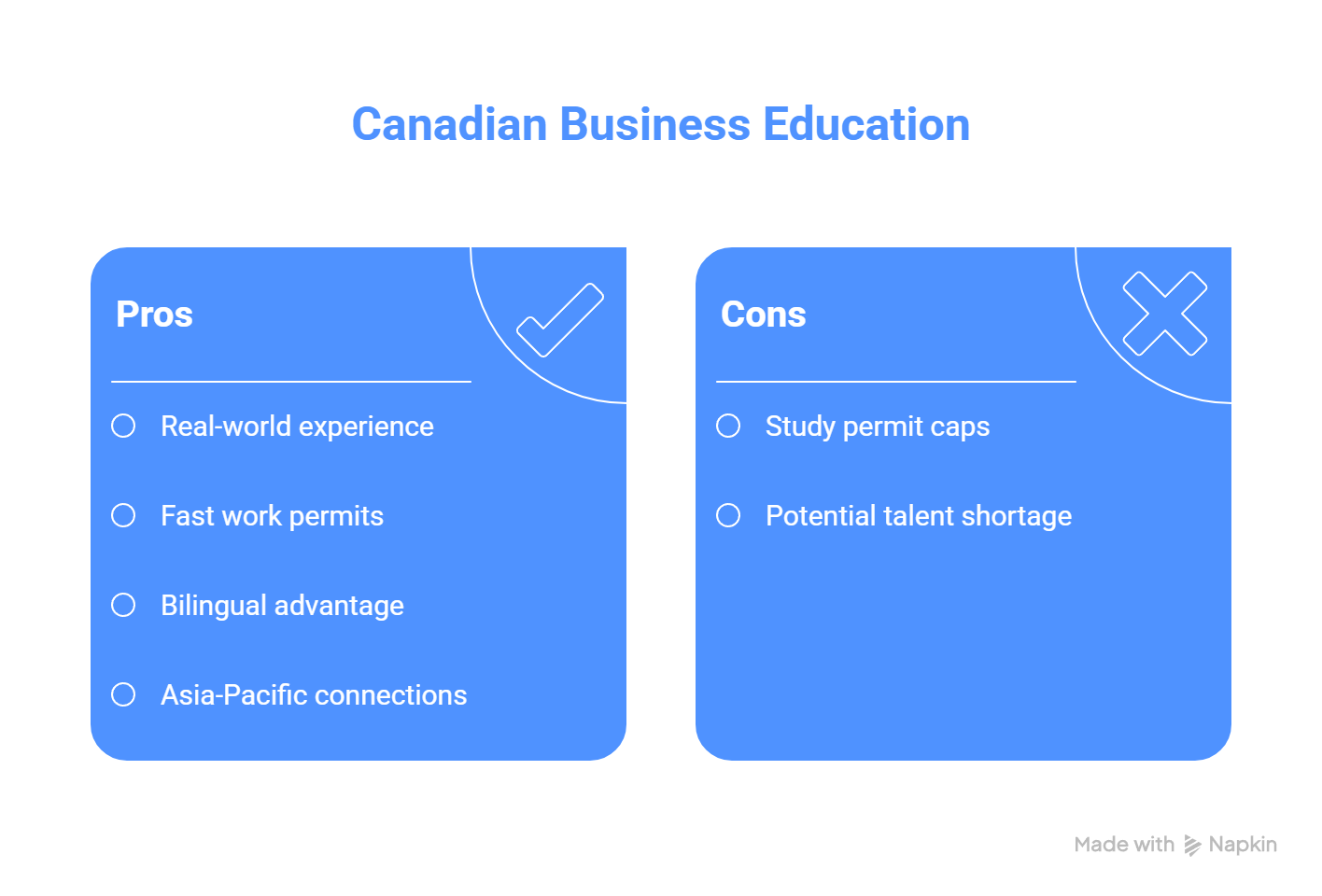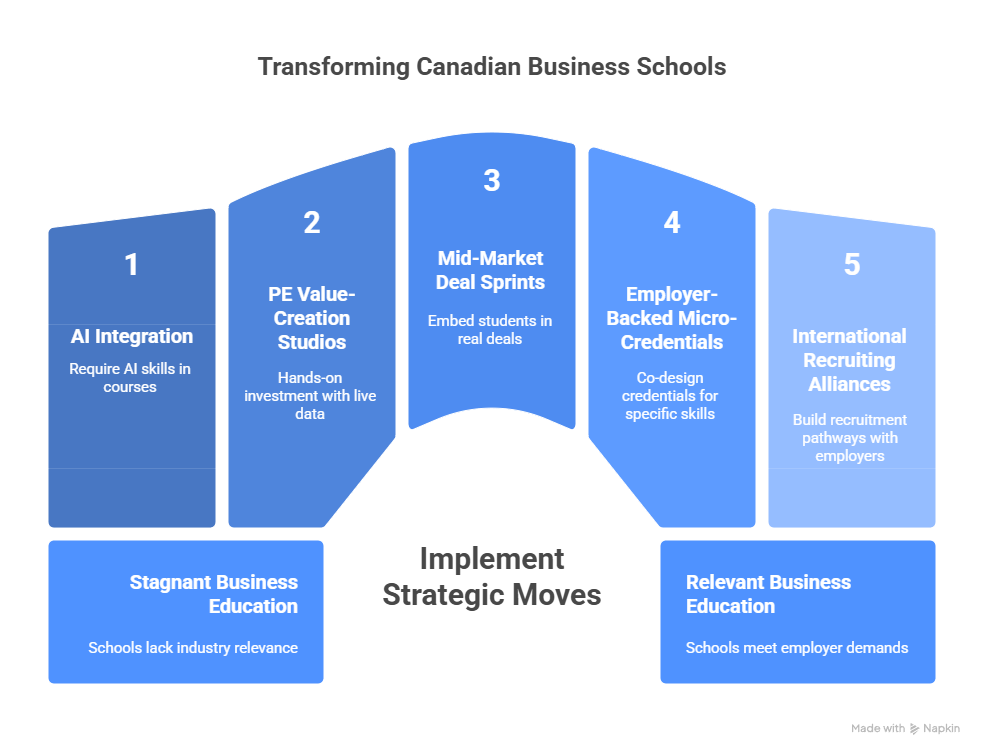MB-eh?: Canadian MBAs Beyond Rankings to Employer-Led Outcomes
Oct 25, 2025
The 2025-2026 business school rankings delivered a shock to Canada's established educational hierarchy. Bloomberg Businessweek placed Concordia's John Molson School of Business at #1 nationally, with Western (Ivey) at #2 and McGill (Desautels) at #3—a dramatic realignment that challenges decades of brand perception. Meanwhile, QS's 2026 ranking maintains Toronto (Rotman) as Canada's leader by its global methodology. This ranking divergence reveals a fundamental truth: the definition of "better" in graduate business education is undergoing a profound transformation, and Canadian schools stand at a strategic inflection point.
The question is no longer which school tops which ranking, but whether Canadian MBAs can deliver what employers actually value: immediate operational impact, AI fluency, and measurable return on investment in an increasingly borderless talent market.

The Rankings Riddle: What the Data Actually Reveals
The conflicting ranking outcomes stem from fundamentally different measurement philosophies. Bloomberg Businessweek's methodology heavily weights employer satisfaction (35%), student satisfaction (30%), and learning outcomes (20%). This employer-centric focus propelled John Molson to the top spot, suggesting strong corporate validation of its graduates' readiness.
Meanwhile, QS's global methodology emphasizes academic reputation (40%) and research impact (10%), domains where Rotman's scale and research output maintain its position. The Financial Times' global ranking tells another story: while Canadian programs appear in the top 100, none crack the global elite tier of 50, hampered by lower weighted salary figures and international mobility scores.
The through-line in all three methodologies? Compensation outcomes and employer perceptions are becoming the ultimate metrics of program quality. According to GMAC's 2025 Corporate Recruiters Survey, employers remain eager to hire MBAs, with a strong emphasis on AI skills and immediate productivity over pedigree alone.

Canada's Structural Advantages: The Foundation for Growth
Canadian business education possesses unique structural advantages in this new environment. The country's extensive co-op and internship programs—particularly strong at schools like Ivey, Waterloo, and Simon Fraser—provide what 92% of employers call "the most reliable predictor of hiring success": real-world experience.
Canada's immigration policies further strengthen its position. While the U.S. imposes barriers like high H-1B fees, Canada's Global Talent Stream processes work permits in as little as two weeks. However, recent caps on study permits—set at 437,000 for 2025, a 10% decrease from 2024—aim to manage growth sustainably. This policy framework continues to support transitions to permanent residency for many graduates.
The bilingual advantage of schools like HEC Montréal and McGill creates natural pipelines to European and African markets, while western schools like UBC Sauder leverage Asia-Pacific connections that align with Canada's Indo-Pacific Strategy.

The Gap Analysis: Where Canadian MBAs Must Improve
Despite these advantages, significant gaps remain. According to recent analyses, Canadian MBA graduates trail their U.S. counterparts in private equity and investment banking placements by nearly 40%. The compensation gap is equally stark: while top U.S. programs report median salaries exceeding $175,000 USD, Canadian programs cluster between $90,000 and $120,000 CAD.
The root cause lies in ecosystem development. "Canadian business schools have excellent academic programming," notes a managing partner at a Toronto-based private equity firm, "but they lack the deep, integrated industry partnerships that transform theoretical knowledge into practical execution skills that deliver value from day one."

The Five-Point Playbook for 2026
For Canadian business schools to capitalize on their momentum, they must execute five strategic moves with operational precision:
- Mandatory AI Integration Across Core Curriculum Schools must move beyond elective AI courses to require AI-augmented deliverables in finance, operations, and strategy courses. This means grading students on their ability to use large language models for competitive analysis, build predictive models in Excel, and automate operational dashboards—exactly the skills employers now demand.
- Establish PE Value-Creation Studios Following the model of Ivey's Gillespie Fund and Rotman's Rotman Capital Markets, schools should create hands-on investment studios where students work with live data from Canadian mid-market funds. The curriculum should focus on the practical mechanics of EBITDA bridge modeling, 100-day plan development, and exit narrative construction.
- Launch Mid-Market Deal Sprints Partnering with Canada's vibrant mid-market private equity community—which represents over 200 funds managing more than $150 billion in assets—schools should embed students in 4-6 week intensive deal sprints, providing due diligence support and operational improvement analysis to actual portfolio companies.
- Develop Employer-Backed Micro-Credentials Instead of generic certificates, schools should co-design micro-credentials with employer partners focused on specific, high-demand skills like SaaS metrics dashboarding, LBO modeling, or supply chain optimization. These credentials should be tied directly to hiring pipelines.
- Forge International Recruiting Alliances Schools must proactively build recruitment pathways with U.S., European, and Gulf region employers, particularly targeting firms frustrated by U.S. immigration constraints. This requires dedicated cross-border career support and immigration navigation services.
The 2026 Scorecard: Measuring What Matters
The success of these initiatives should be measured by a new set of metrics focused on employer value creation:
- Percentage of core curriculum requiring AI-augmented deliverables (Target: 80%+)
- Offers received within 90 days of graduation (Target: 95%+)
- Compensation uplift versus pre-MBA salary (Target: 120%+)
- Number of dedicated PE/IB seats per cohort (Target: 25% of class)
- Employer satisfaction with graduate readiness (Target: 90%+)
The Bottom Line
Canadian business schools stand at a rare moment of opportunity. The global talent market is restructuring, employer needs are evolving, and their traditional U.S. competitors face increasing headwinds. By focusing relentlessly on employer-centric outcomes, integrating AI throughout the educational experience, and building deeper industry partnerships, Canadian MBAs can transcend ranking controversies and establish themselves as the most practical, operationally ready, and valuable business education product in the global market.
The measure of success won't be which ranking they top, but how quickly their graduates can create value for employers—and how much employers are willing to pay for that capability.
© VCII 2025 By Tracy Wong (www.vciinstitute.com)
We have many great affordable courses waiting for you!
Stay connected with news and updates!
Join our mailing list to receive the latest news and updates from our team.
Don't worry, your information will not be shared.
We hate SPAM. We will never sell your information, for any reason.


